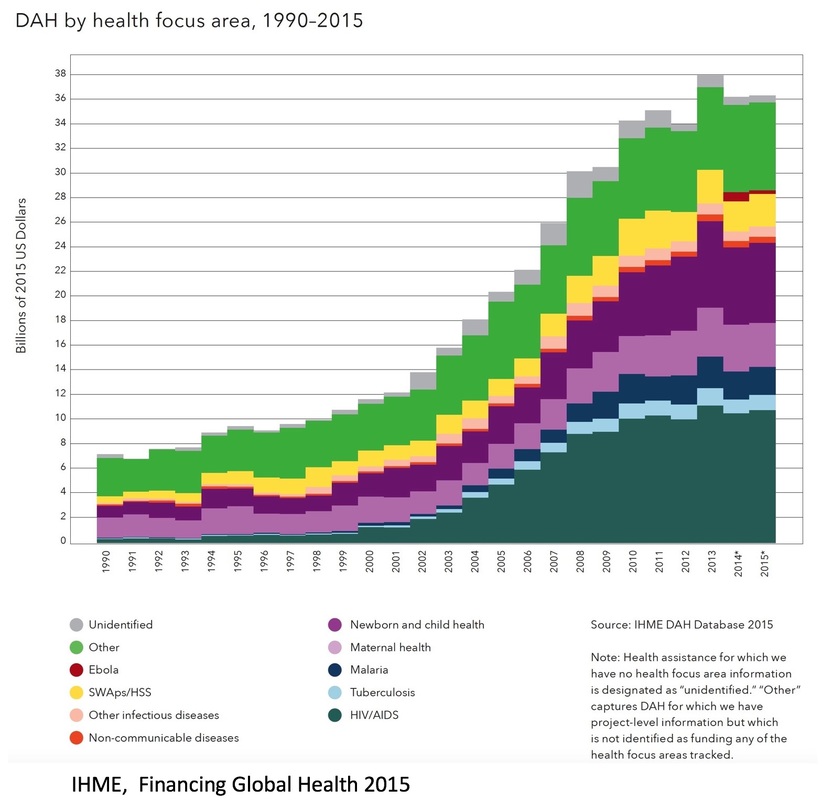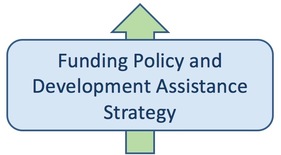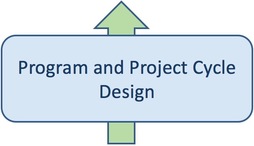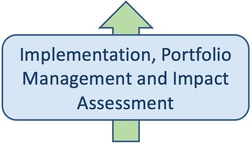Improving Effectiveness of Development Assistance for Health
|
In the last two decades, the international community substantially increased its contribution to Development Assistance for Health (DAH) reaching an historical peak of US$38 billion annually in 2013.
Achieving the expected health results is determined by the way the donor-recipient partnership is shaped and by at least four steps in DAH: a) priority setting (programmatic, geographical, populations); b) by funding policy and strategy definitions and execution; c) by how programs and projects are designed (project/ program cycle, project / grant design, monitoring and evaluation embedded in design), and d) by how specific projects, programs, and portfolios are managed and monitored during implementation ( program and projects/grants management, portfolio management, monitoring and impact assessment). The international community has learned valuable lessons on each of these four critical steps to maximize the impact of DAH. Applying those lessons is now more important at a time when development assistance for health does not seem to be growing in line with historical trends, when some countries with significant economic growth are transitioning away from donor support to own funding and, when leading donors are facing their own fiscal challenges limiting the space for growth. Most CHD members have a lifetime experience in DAH, both from donor and/or from recipient partners perspectives. DAH priority setting usually takes into account a combination of robust evidence on Burden of Disease and poverty-alleviation objectives and each donor specific priorities and concerns (e.g. its own funding sources, tax-payer mandates, own capabilities, geographical presence). CHD partners with Donor and Recipient countries, based on their respective priorities and constraints, to support the formulation of a sound DAH funding strategy, program and project design, and program and portfolio management. We also provide advice and work on fiscal space, including alternative options for development funding graduation to help promote long-term DAH success. |
DAH Policy and
|
Program and Project
|
Implementation and Portfolio ManagementA good DAH program / project design is the beginning of a usually long journey towards impact and health results. There are at least three critical areas for implementation impact: a) effective partnership, support and monitoring of each program and project being implemented by recipient partner with continuous donor-recipient feedback; b) periodic independent review of portfolio effectiveness in view of Funding Policy and Health Development strategy; c) selective impact evaluation of program and projects to test initial results framework.
The journey to success does not end at program /project agreement between donor and recipient partner, it is the beginning of the actual effort for impact. Ensuring that program and project designs are made with a sharp focus on implementation (beyond technical appealing of the design) has proven to be critical in implementation. Similarly, implementation support and supervision of program implementation is critical not only to identify early signs of challenges but to provide experience and expertise that may not be fully familiar to implementing parties particularly at early stages of implementation. Ensuring capacity and capabilities on the ground by donor parties is critical for successful implementation. The successful execution of a Funding Policy and Health Development Strategy happens in the day-to-day decision-making regarding program and project approvals and implementation adjustments on the ground. Although every program and project may seem coherent in itself when examined in isolation, it is essential to periodically examine the entire country or even donor portfolio to assess whether donor funding is responding to a policy and strategy. Global health development experience suggests that it is critical to avoid "patchwork" fragmentation of donor assistance that occurs in the absence of such reviews and significantly reduces portfolio impact. Learning how robust is the donor and recipient capacity to link funding to the initial results frameworks and learning the on-the-ground impact of the interventions is a critical task for long term portfolio impact assessment, one that can have substantial positive global knowledge externalities. Selective impact evaluation is key in this learning process. CHD works and provides advice on both, project implementation and on portfolio management, alignment with policy and strategy and impact assessment reviews. We partner with distinctive monitoring and evaluation partners for impact evaluations. |





